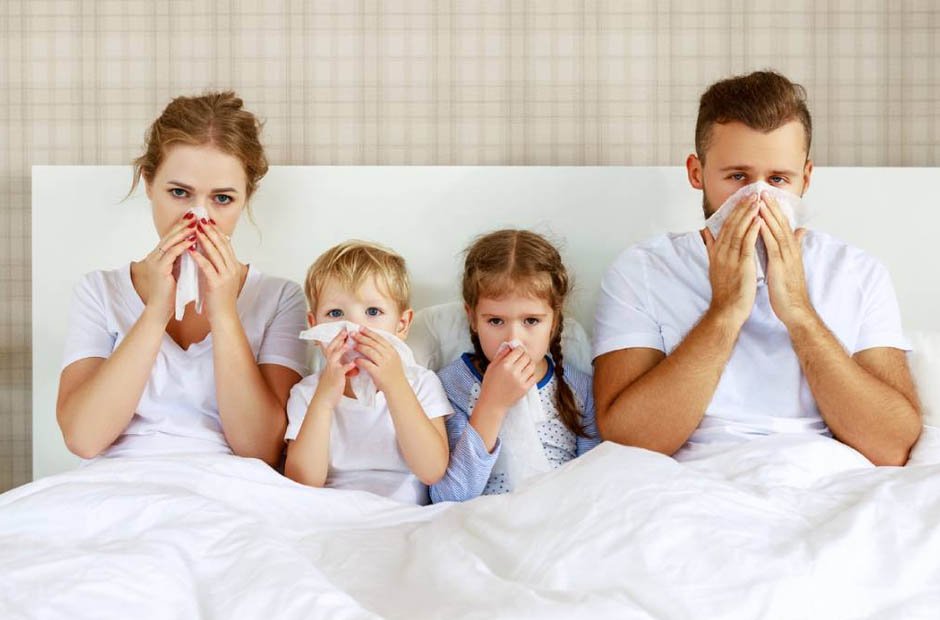Walking through the front door shouldn’t trigger a sneezing fit, but for plenty of people, that’s exactly what happens. Symptoms that calm down during the workday come roaring back the moment they get home. Mornings start with congestion that clears up after leaving the house. Weekends at home mean constant tissue boxes and antihistamines, while trips away bring unexpected relief.
When home becomes the place where allergies feel worst, something in that environment is causing problems. The tricky part is figuring out what – because the culprits aren’t always obvious, and they’re often hiding in places that don’t get regular attention.
The Usual Suspects Aren’t Always Guilty
Most people blame their pets first. Dogs and cats definitely contribute to indoor allergens, but pet dander alone doesn’t explain why symptoms spike in certain rooms or at specific times of day. Someone who’s lived with the same cat for years shouldn’t suddenly develop worsening reactions unless something else has changed.
Pollen gets blamed next, but if outdoor pollen were the main issue, symptoms would follow the person outside rather than improving when they leave home. When allergies consistently feel better away from the house, the problem is coming from inside, not drifting in through windows.
Dust mites are real and they do cause reactions, but aggressive cleaning of bedding and surfaces sometimes doesn’t help at all. That’s a clue that the allergen source isn’t where it’s being cleaned – it’s somewhere else entirely.
Hidden Accumulation in Air Systems
Here’s where most people don’t think to look: the heating and cooling system. Air doesn’t magically appear in rooms – it travels through ductwork that can accumulate years of dust, debris, pet dander, pollen, and other particles. Every time the system runs, it circulates whatever has built up in those ducts throughout the entire home.
The problem compounds over time. A thin layer of dust becomes a thick coating. Dead skin cells, insect parts, and rodent droppings can end up in ductwork without anyone knowing. Moisture in ducts can lead to mold growth that spreads spores every time air flows through. These aren’t theoretical possibilities – they’re common realities in homes where ductwork hasn’t been inspected or maintained.
For people dealing with persistent indoor allergies, addressing what’s accumulated in the HVAC system often makes a bigger difference than any amount of surface cleaning. Services focused on Clean Air through professional duct cleaning can remove the buildup that’s been circulating through living spaces, reducing the constant exposure to whatever has been trapped in there.
The timing matters too. If allergies suddenly got worse after moving into a home, or after a renovation project, or following a pest problem, the ductwork likely captured and has been redistributing those allergens ever since.
Moisture Problems Creating Ongoing Issues
Mold triggers severe reactions in sensitive people, and it grows anywhere moisture lingers. The obvious spots get checked – bathrooms, basements, around windows. What gets missed are the less visible moisture problems that feed mold growth in hidden spaces.
Roof leaks don’t always show up as ceiling stains right away. Water can travel along rafters and beams, settling in wall cavities or attic insulation where mold grows undisturbed. Small plumbing leaks behind walls or under floors create similar problems. The mold releases spores into the air constantly, but since it’s not visible, it never gets treated.
Humidity levels matter too. Homes in humid climates or with poor ventilation can maintain high enough moisture levels to support mold growth on surfaces that seem dry. This is where it gets expensive – because lowering humidity often requires dehumidifiers or ventilation improvements, not just fixing a leak.
Basement spaces are notorious for this. Even without standing water, concrete foundations allow moisture to seep through. Anything stored directly on basement floors – cardboard boxes, old furniture, stored clothing – can develop mold that affects air quality throughout the house as air circulates.
Chemical Sensitivity Masquerading as Allergies
Not every respiratory reaction is a true allergy. Chemical sensitivities cause similar symptoms but come from completely different sources. New furniture releases formaldehyde. Cleaning products leave residues that off-gas. Scented candles, air fresheners, and laundry products add volatile organic compounds to indoor air.
The problem is that these exposures are constant at home but not elsewhere. Work environments might have different ventilation, different cleaning products, and different materials. The contrast makes home feel worse even though the issue isn’t technically an allergen.
Carpet presents a special problem here. New carpet off-gases chemicals for months. Old carpet traps years of whatever has been tracked in, spilled on it, or absorbed from the air. Professional carpet cleaning helps temporarily, but if the carpet itself is the problem, cleaning won’t solve it.
Pressed wood furniture and cabinets continue releasing formaldehyde for years. Homes with lots of particleboard or MDF might have elevated levels that cause ongoing irritation. Opening windows helps, but that’s not practical year-round in most climates.
Filtration That Doesn’t Actually Filter
HVAC filters are supposed to catch particles before they circulate through the home. The reality is that many homes use the cheapest filters available, which catch almost nothing except large debris that would damage the system. These thin, flat filters let dust, pollen, and other allergens pass right through.
But get this – even upgrading to better filters doesn’t help if those filters never get changed. A clogged filter stops airflow and can actually make air quality worse by forcing unfiltered air through gaps around the filter frame. The schedule printed on the filter package assumes average conditions. Homes with pets, construction nearby, or smokers need more frequent changes.
Filter ratings matter too. MERV ratings indicate how small a particle the filter can catch. Basic filters are MERV 1-4 and catch almost nothing that affects allergies. MERV 8-11 filters catch most common allergens. MERV 13-16 catch even smaller particles but can restrict airflow in systems not designed for them.
Some people install the highest rated filter they can find, thinking more filtration is always better. Then they wonder why their system struggles or their energy bills increase. The blower has to work harder to push air through dense filters, which can strain equipment not designed for that resistance.
Pets in Specific Spaces
Pet allergies are real, but the reaction often depends more on where the pet spends time than whether there’s a pet in the home at all. A dog that sleeps on the bedroom floor means concentrated dander exposure for eight hours every night. A cat that lounges on a favorite couch saturates that furniture with allergens.
The tricky part is that pet dander doesn’t stay where the pet sits. It becomes airborne and distributes throughout the home through normal air circulation. HEPA air purifiers in the rooms where pets spend most time can help, but they’re fighting a constant battle against new dander being produced.
Washing pets regularly reduces the dander they shed, but it’s a temporary fix that requires consistency. One bath doesn’t solve ongoing exposure. Some people see improvement by keeping pets out of bedrooms entirely, which at least gives the respiratory system eight hours of reduced exposure during sleep.
Testing vs. Guessing
Allergy testing can identify specific triggers, but it doesn’t pinpoint where in the home those allergens are concentrated. Someone allergic to dust mites might assume the bedroom is the problem when actually the living room couch is worse. Mold allergy test results don’t reveal which rooms have mold growth.
Air quality testing provides different information. Professional testing can measure particle counts, identify mold species, and detect elevated chemical levels. This costs money upfront but can prevent spending more money on solutions that target the wrong problems.
DIY mold test kits exist but mostly just confirm that mold spores are present – which they are in every home. What matters is whether levels are elevated and what type of mold is growing. Professional testing provides that detail.
Some HVAC companies offer camera inspections of ductwork. Seeing what has accumulated inside can be eye-opening. Years of buildup that’s been circulating through the air becomes suddenly visible, which often motivates people to address issues they’d been ignoring.
When Multiple Factors Combine
The frustrating reality is that indoor allergies rarely have just one cause. The HVAC system might be circulating dust while the basement has mold and the carpet releases chemicals and the pet adds dander. Each problem makes the others worse because they’re all affecting the same air that gets breathed constantly.
Addressing these issues usually means prioritizing. What can be fixed easily? What will have the biggest impact? Sometimes that means starting with duct cleaning to reduce what’s circulating constantly. Other times it means dealing with moisture problems before they create more mold. Each home is different.
The good news is that even partial improvements help. Cutting allergen exposure by half still means less medication, better sleep, and fewer miserable days. Perfect indoor air quality might not be achievable, but significant improvement usually is once the actual sources get identified and addressed.



